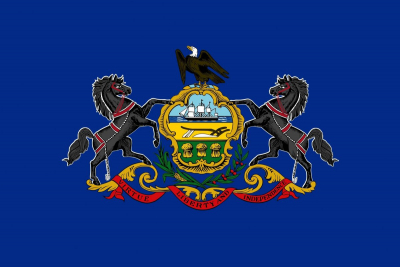In the United States, Flag Day is celebrated on June 14. It commemorates the adoption of the flag of the United States on June 14, 1777, by resolution of the Second Continental Congress.
The Flag Resolution, passed on June 14, 1777, stated: "Resolved, That the flag of the thirteen United States be thirteen stripes, alternate red and white; that the union be thirteen stars, white in a blue field, representing a new constellation."The United States Army also celebrates the U.S. Army birthday on this date; Congress adopted "the American continental army" after reaching a consensus position in the Committee of the Whole on June 14, 1775.In 1916, President Woodrow Wilson issued a proclamation that officially established June 14 as Flag Day; on August 3, 1949, National Flag Day was established by an Act of Congress. Flag Day is not an official federal holiday. Title 36 of the United States Code, Subtitle I, Part A, CHAPTER 1, § 110 is the official statute on Flag Day; however, it is at the president's discretion to officially proclaim the observance. On June 14, 1937, Pennsylvania became the first U.S. state to celebrate Flag Day as a state holiday, beginning in the town of Rennerdale. New York Consolidated Laws designate the second Sunday in June as Flag Day, a state holiday.Perhaps the oldest continuing Flag Day parade is in Fairfield, Washington. Beginning in 1909 or 1910, Fairfield has held a parade every year since, with the possible exception of 1918 and 2020, and celebrated the "Centennial" parade in 2010, along with some other commemorative events. Appleton, Wisconsin, claims to be the oldest National Flag Day parade in the nation, held annually since 1950.Quincy, Massachusetts, has had an annual Flag Day parade since 1952 and claims it "is the longest-running parade of its kind" in the U.S. The largest Flag Day parade had been held annually in Troy, New York until 2017, which based its parade on the Quincy parade and typically draws 50,000 spectators. In addition, the Three Oaks, Michigan, Flag Day Parade is held annually on the weekend of Flag Day and is a three-day event and they claim to have the largest flag day parade in the nation as well as the oldest.
Pennsylvania ( (listen) PEN-səl-VAY-nee-ə; Pennsylvania German: Pennsilfaani), officially the Commonwealth of Pennsylvania, is a U.S. state spanning the Mid-Atlantic, Northeastern, and Appalachian regions of the United States. It borders Delaware to the southeast, Maryland to the south, West Virginia to the southwest, Ohio to the west, Lake Erie and the Canadian province of Ontario to the northwest, New York to the north, and New Jersey to the east.
Of the 50 U.S. states, Pennsylvania is the 33rd-largest by area and the fifth-most populous, with over 13 million residents as of 2020; it ranks ninth in population density. Nearly half the population is concentrated in the southeastern Delaware Valley, centered around the state's largest city, Philadelphia (6.25 million); another one-third live in Greater Pittsburgh (2.37 million) in the southwest. The state capital and 15th-largest city is Harrisburg; other major cities include Allentown, Scranton, Lancaster, and Erie.
Pennsylvania's geography is highly diverse: the Appalachian Mountains run through its center, while the Allegheny and Pocono Mountains span much of the northeast; close to 60% of the state is forested. While it has only 140 miles (225 km) of waterfront along Lake Erie and the Delaware River, Pennsylvania has more navigable rivers than any other state, including the Delaware, Ohio, and Pine Creek.
Pennsylvania's was one of the thirteen British colonies that would eventually form the United States. It was founded in 1681 through royal land grant to William Penn, son of the state's namesake; the southeast portion was once part of the colony of New Sweden. Established as a haven for religious and political tolerance, the Province of Pennsylvania was noteworthy for its relatively peaceful relations with native tribes, innovative government system, and religious pluralism. Pennsylvania's governing framework inspired the U.S. Constitution, which, along with the Declaration of Independence, was drafted in Independence Hall in Philadelphia; the city also hosted the first and second Constitutional Convention that led the American Revolution. Pennsylvania became the second state to ratify the Constitution on December 12, 1787.

1937Jun, 14
Pennsylvania becomes the first (and only) state of the United States to celebrate Flag Day officially as a state holiday.
Choose Another Date
Events on 1937
- 23Jan
Leon Trotsky
The trial of the anti-Soviet Trotskyist center sees seventeen mid-level Communists accused of sympathizing with Leon Trotsky and plotting to overthrow Joseph Stalin's regime. - 21Feb
Spanish Civil War
The League of Nations bans foreign national "volunteers" in the Spanish Civil War. - 12May
United Kingdom of Great Britain and Northern Ireland
The Duke and Duchess of York are crowned as King George VI and Queen Elizabeth of the United Kingdom of Great Britain and Northern Ireland in Westminster Abbey. - 27May
Golden Gate Bridge
In California, the Golden Gate Bridge opens to pedestrian traffic, creating a vital link between San Francisco and Marin County, California. - 22Jul
Judicial Procedures Reform Bill of 1937
New Deal: The United States Senate votes down President Franklin D. Roosevelt's proposal to add more justices to the Supreme Court of the United States.

 English
English  español
español  français
français  português
português  русский
русский  العربية
العربية  简体中文
简体中文 